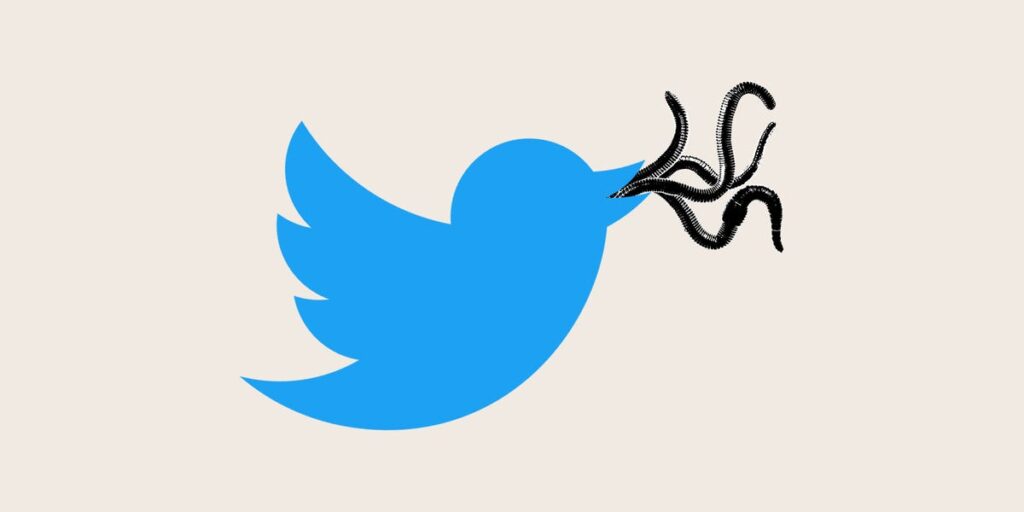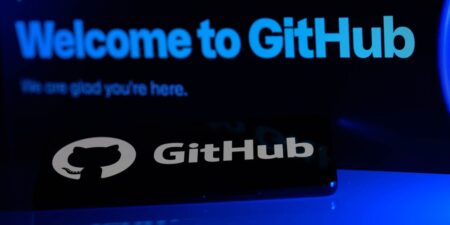About three weeks after Elon Musk bought Twitter in October 2022, #RIPTwitter started trending. Musk had gutted the staff, and more workers quit when he gave them an ultimatum: Work “hardcore” hours or leave. With the platform on the brink, its users held a funeral. They spent the evening saying goodbye to their followers, shitposting on the #hellsite for the last time, and rounding up the best and worst tweets they had saved in the platform’s 16-year history. They were somber, giddy, and anxious about the future of online dialogue. It seemed certain that a competitor would rise.
Right then, Gabor Cselle, a former director at Google and employee at Twitter, was working on a rival app. First called T2 and later Pebble, the goal was to make a trustworthy, safe site to fill the gap left by Twitter.
Cselle was far from alone. As the bird app’s outlook grew more bleak, several alternative conversation platforms hatched: Narwhal, Spoutible, Spill, Post, and Cohost among them. In July 2023, Meta tried to seize the moment by launching Threads. Twitter cofounder Jack Dorsey tried to fix what he saw as Twitter’s wrongs by launching Bluesky. (He quit in May 2024, saying the platform was “literally repeating all the mistakes” Twitter had made.)
Meanwhile, Twitter continued to teeter. Musk told advertisers “go fuck yourself,” abandoned most content moderation, and infamously changed the logo from a friendly blue bird to a cold X. At the end of last year, The Verge published a news package declaring that 2023 would go down as “The Year Twitter Died.”
But two years after Musk took over, the platform is still the room where it happens. Misinformation has skyrocketed and growth has stagnated; the market-intelligence firm Sensor Tower says its number of active daily users dropped by 28% from October 2022 to September 2024 while Threads’ users have grown. But when big news hits, like a major sporting event or a sitting president’s decision to drop out of the race or the attempted assassination of a former president, X is where the conversation erupts.
Most of Twitters’ upstart challengers have folded. I talked to several founders about what they learned trying to compete with Musk, and the state of civil discussion online.
You can’t start a Twitter alternative by saying, ‘We want to be the new public square.’
Pebble founder Gabor Cselle
“I sort of misread that moment,” Cselle says today. He thought all those mourners wanted something that was just like Twitter but that would reliably work — somewhere without excessive trolling and hate speech and deepfakes. “What #RIPTwitter was about, in retrospect,” he says, was a panicked “sense of ‘I might lose my status and my following and my handle and all of this network I’ve built up.'”
Cselle says he’s learned that for social media platforms, “trust and safety is a secondary value proposition.”
“It becomes important to you as a user — imminently and immediately important — once something goes really bad,” he says. But he’s learned that people “don’t join a new space that is otherwise empty for it. You can’t start a Twitter alternative by saying, ‘We want to be the new public square.'”
Pebble got about 20,000 registered users before stagnating and shutting down in November 2023. It lives on as a smaller server on Mastodon, which itself peaked at 2.5 million active users in December 2022 but is down to about 865,000. Cohost, made by the Anti Software Software Club (which describes itself as “a not-for-profit software company that hates the software industry”), said last month that it was running out of money and would become read-only by the end of the year.
When Post, a platform “built for news,” launched in fall 2022, publishers like Politico, The Boston Globe, and Fortune signed up, and hundreds of thousands of people joined the waitlist. Founded by former Waze CEO Noam Bardin and funded in part by Andreessen Horowitz, the idea was that people could pay small amounts to read individual news articles rather than subscribing to many outlets. “I believe the future newspaper is the feed and want to make it more civil for users, profitable for publishers and better for society,” Bardin said in a tweet announcing Post. But it shut down in April 2024, citing slow growth that gave it no path toward becoming a “significant platform.”
Several of these alternative conversation platforms were born from a similar ethos, searching to fix the chaos and bile that legacy social media had incentivized. Narwhal, backed by Laurene Powell Jobs‘ Emerson Collective, marketed itself as a platform for “productive discussions grounded in good faith.” It began as invite-only, and dialogue centered on topics of the day that Narwhal would determine — sometimes about the environment, politics, or tech. Nicholas Thompson, the CEO of The Atlantic and a cofounder of Narwhal, says that while the conversations among the hundreds of users were substantive and engaging, Narwhal lacked Twitter’s bite. “That was also the tradeoff,” Thompson says. “If there had been a way to make it more fun while also thoughtful, that would have been the road to success.”
After a few months, Narwhal pivoted to become an AI software-as-a-service platform, Speakeasy AI, which aimed to enable civil, engaging dialogue on other platforms. Thompson says the goal wasn’t to replace Twitter but to fix toxicity online. He wanted to build something that Twitter, Reddit, or Facebook might use. The company didn’t grow much, and in April, Speakeasy’s tech was acquired by Amplica Labs.
But Thompson says the civil conversations on Narwhal gave him hope. Social media is fracturing — even if it’s a leak rather than a flood. That gives people opportunities to find different communities or uses for social sites. A legacy platform like X or a large one like TikTok, have their advantages, too, and might become a crowded center for discussion, but users are left to the whims of its CEO. “There’s a ton of power in whoever controls” a big social media platform, Thompson says. Last week, Musk shared an image edited to show an Atlantic story with the headline “Trump is literally Hitler.” The post has more than 25 million views. Musk hasn’t deleted the tweet, though a community note posted below it clarifies that the headline is fabricated.
Some places where Twitter’s former users went are still growing. Spill, a Black-owned social platform, has been downloaded more than half a million times. Like other Twitter alternatives, it set out to solve the problems with hate speech on big platforms. But its mission is broader: Its cofounder Alphonzo Terrell says that while the app is open to everyone, it prioritizes elevating minority communities, like Black and LGBTQ+, and protecting them from harassment and hate Spill has raised nearly $5 million in pre-seed funding, with the actor Kerry Washington recently investing.
Spill uses large language models and AI for content moderation, Terrell tells me. As with Narwhal, its algorithm rewards positive posts. But there’s still room for political discussion: When President Joe Biden announced this summer that he would not seek reelection and Vice President Kamala Harris became the presumptive Democratic nominee, Spill saw a flurry of activity, Terrell says. Black women on the platform in particular talked about preparing themselves for an onslaught of racism and misogyny as the result of Harris’ rise. It’s a more nuanced political conversation than what might trend on something like X, but it worked on Spill. “People don’t need to code switch” on Spill, Terrell says.
The rush to become the next Twitter has slowed — though there’s still a chance an alternative could become popular enough to replace it. Threads has the potential to lure advertisers, but culturally it hasn’t proved the Twitter killer many thought it might be. A lot of these brand-safe or news-focused apps have tended to feel more like homework than recess, though Spill may be the exception for now.
I’ve been on Twitter since 2010. Recently I’ve found it less useful for my work as a journalist, but I’m still lurking. And early this month, when my beloved Phillies tanked their playoff chances spectacularly, I turned to X. The algorithm knew I cared about this; it knew I wanted to commiserate with fellow fans and look at memes and watch highlights from the one game where the team played well over and over and over, which I’ll be doing until opening day in 2025. I wasn’t engaging in elevated, thought-provoking dialogue, nor was I spreading misinformation or hate. I was doing something in the middle — something cathartic. It was just what I was looking for.
Amanda Hoover is a senior correspondent at Business Insider covering the tech industry. She writes about the biggest tech companies and trends.
Read the full article here
















